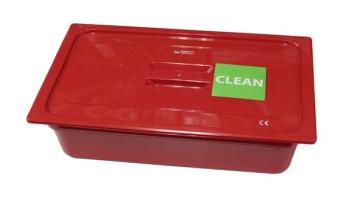
Sterile Processing
Latest News












Q: We are experiencing problems with damaged packaging, especially for our loaner sets. This is causing delays in the operating room and a lot of frustration for the OR and sterile processing staff. What can be done to rectify this?






Q: I was at a conference recently and the speaker said that emergency eyewash stations are needed at all locations where chemicals are used. Can you provide more information on this?A: The American National Standards Institute (ANSI) has a standard, American National Standard for Emergency Eyewash and Shower Equipment, Z358.1-2014. This document “establishes minimum performance and use requirements for eyewash and shower equipment” for anyone whose eyes or body have been exposed to hazardous materials or chemicals. This standard is also an excellent reference for “performance and use requirements for personal wash units and drench hoses, which are considered supplemental to emergency eyewash and shower equipment.”









